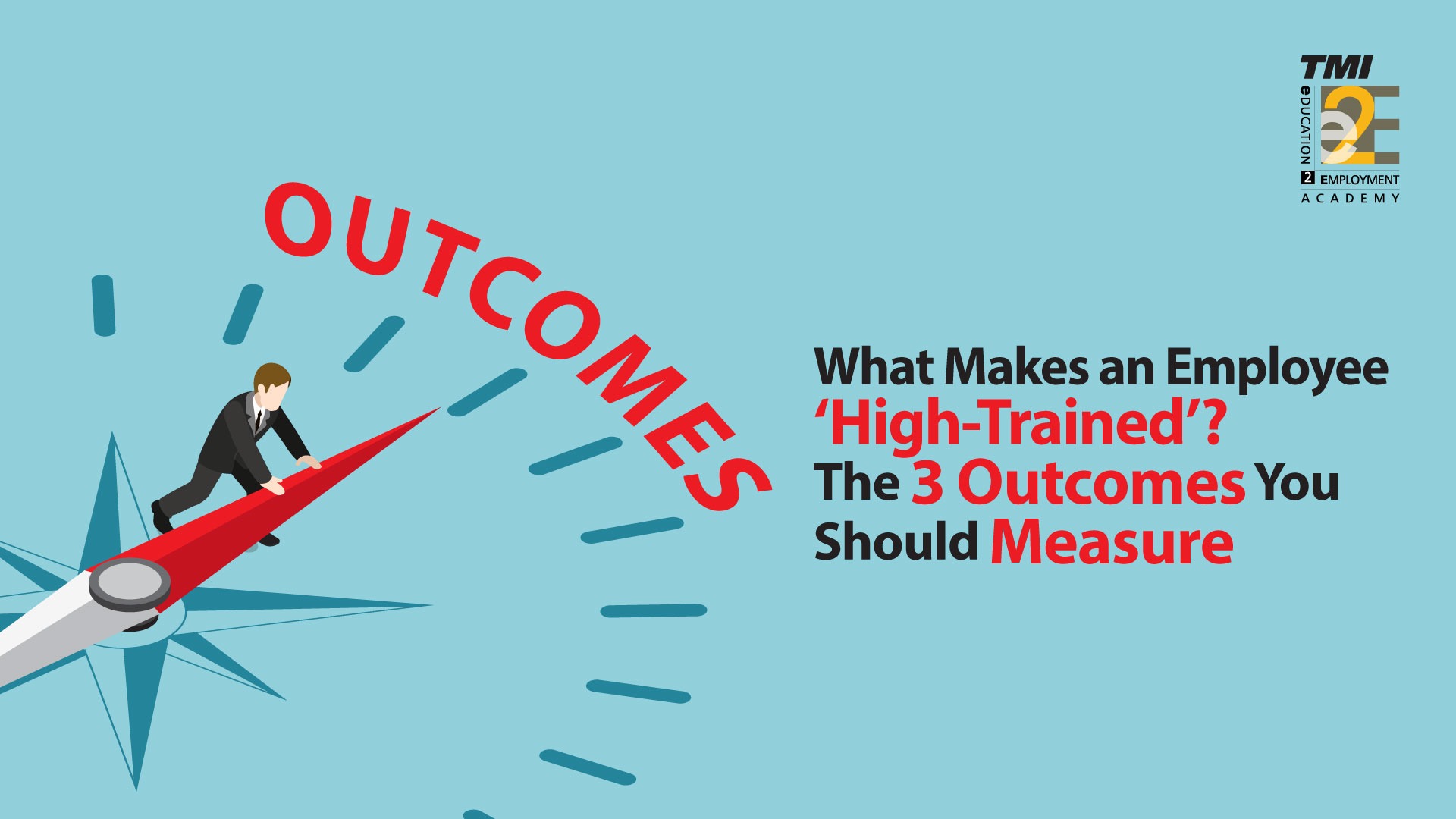- October 15, 2025
- 0 Comments
- By admin
Stop Measuring Training by Certificates. Start Measuring by Output.
For too long, training programs in corporate India have been evaluated based on attendance, completion rates, and certification scores. But here’s the problem:
Being trained doesn’t always mean being ready.
And having a certificate doesn’t always lead to better on-the-job performance.
And having a certificate doesn’t always lead to better on-the-job performance.
In high-volume, frontline-heavy sectors—like BFSI, retail, manufacturing, and logistics—the real question isn’t “Was the training completed?”
It’s “Did the employee perform better from Day 1?”
It’s “Did the employee perform better from Day 1?”
At TMI e2E Academy, we’ve helped over 3 lakh frontline employees become job-ready across industries. And we’ve found that the most effective training programs are those that align to business outcomes—not just knowledge checks.
So, what actually makes an employee “high-trained”?
Here are the three outcomes you should measure if you want your training to translate into performance.
1. Day 1 Readiness
A high-trained employee doesn’t need a warm-up period.
They deliver value from Day 1—whether that means confidently handling a customer query, using a CRM tool, or completing a field visit with minimal supervision.
They deliver value from Day 1—whether that means confidently handling a customer query, using a CRM tool, or completing a field visit with minimal supervision.
How to measure it:
- Task completion rate within first 5 days
- Supervisor confidence score during shadow period
- Error-free outputs on core responsibilities (e.g., data entry, billing, documentation)
Training programs should simulate real-life tasks, not just cover concepts.
We design Day 1-focused training with role plays, job simulations, and scenario-based eLearning to ensure immediate effectiveness.
We design Day 1-focused training with role plays, job simulations, and scenario-based eLearning to ensure immediate effectiveness.
2. Lead Indicator Execution
Top performers often follow specific behaviors that drive long-term results.
These “lead indicators” are habits and actions that can be tracked early—and they often predict success better than outcomes alone.
These “lead indicators” are habits and actions that can be tracked early—and they often predict success better than outcomes alone.
A high-trained employee consistently executes these lead indicators:
- For a field sales agent: number of calls before noon
- For a customer care rep: first-call resolution attempts
- For a cashier: billing speed and accuracy in peak hours
How to measure it:
- Activity logs from the first two weeks
- Digital nudging data (if available)
- Team manager reports on early patterns
Training should focus on developing these behaviors, not just explaining the theory. At TMI e2E, we design micro modules that reinforce these habits every day.
3. Peer Comparison in the First 30 Days
True training impact shows up when a new joinee outperforms peers with similar tenure.
If your training is working, your new hires should be among the top 30% in early KPIs.
If your training is working, your new hires should be among the top 30% in early KPIs.
How to measure it:
- Compare productivity, quality, and customer ratings within cohort
- Benchmark early attrition across trained vs. untrained groups
- Monitor manager feedback and escalation rates
This also helps justify your L&D investment.
If trained employees are retaining longer and performing better, your training isn’t a cost—it’s a productivity accelerator.
If trained employees are retaining longer and performing better, your training isn’t a cost—it’s a productivity accelerator.
Final Thought: Don’t Wait 90 Days to See Impact
Many organizations wait for quarterly reports to assess training outcomes.
But by then, attrition may have already happened.
Missed productivity is unrecoverable.
But by then, attrition may have already happened.
Missed productivity is unrecoverable.
That’s why we build outcome-linked training programs that deliver impact from Day 1 to Day 30.
Because when it comes to training ROI, output matters more than attendance.
Conclusion
The next time someone completes a training, don’t ask:
“Did they get the certificate?”
Ask:
“Are they delivering results faster than others?”
“Did they get the certificate?”
Ask:
“Are they delivering results faster than others?”
That’s what makes someone truly high-trained.





Leave a comment